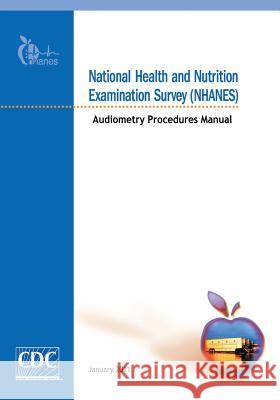National Health and Nutrition Examination Survey (NHANES): Audiometry Procedures Manual » książka
National Health and Nutrition Examination Survey (NHANES): Audiometry Procedures Manual
ISBN-13: 9781499246438 / Angielski / Miękka / 2014 / 128 str.
National Health and Nutrition Examination Survey (NHANES): Audiometry Procedures Manual
ISBN-13: 9781499246438 / Angielski / Miękka / 2014 / 128 str.
(netto: 95,82 VAT: 5%)
Najniższa cena z 30 dni: 94,31 zł
ok. 13-18 dni roboczych.
Darmowa dostawa!
Hearing is important. It is the sensory channel by which we are connected to other people, warned of impending dangers, and entertained by music and laughter. Good hearing enables us to perceive the laughter of friends, the cries of a baby, and the breeze rustling through the trees. Without it, we feel isolated from the world around us and frustrated by our inability to fully understand the flurry of activity that surrounds us. Man is a social creature, and hearing is critical to his ability to function as such. Hearing loss is a widespread problem. More than 36 million people in the United States have some degree of hearing impairment, making it the third most common health problem in the U.S. While the prevalence of hearing loss increases with age, it is not merely a problem of the elderly. Two or three out of every 1,000 children born in the U.S. are deaf or hard-of-hearing. Approximately 8 percent of children under age 18 have an educationally-significant hearing loss. Among adults, 18 percent of persons 45-64 years old have a hearing loss, 30 percent of those aged 65-74 have difficulty hearing, and nearly half of those over age 75 have hearing trouble. An estimated 26 million Americans have hearing loss caused by overexposure to noise, which is a completely preventable problem. Only about 20 percent of individuals who could benefit from a hearing aid actually use one. In addition, an estimated 25 million Americans have tinnitus (ringing in the ears), a condition that can be as disabling as hearing loss. More than two million of these individuals experience an incapacitating tinnitus that interferes with daily living activities. Hearing loss can be caused by a myriad of factors-age, noise exposure (occupational or recreational), developmental syndromes, infectious disease, physical trauma, ototoxic drugs, and chemicals-all of which are further influenced by genetic susceptibility. Hearing loss is an "invisible" impairment; that is, there are usually no obvious external signs of the damage that is done. In children, it often goes undetected for some time while parents, educators, or health professionals mistake the signs of hearing difficulty for behavior problems or learning disabilities. In older individuals, hearing loss usually develops gradually and insidiously over time. Because of this, hearing loss is frequently misinterpreted by the individual as "mumbling" by others or "getting used to" sounds. Others often misinterpret someone's hearing difficulty as inattentiveness or dementia. Often, extensive and irreparable damage has been done to the auditory system before it is noticed. The National Center for Health Statistics (NCHS) has regularly included evaluations of the auditory system in its health examination surveys. These evaluations have included one or more of the following: a brief medical examination of the ear (otoscopy), interview questions regarding hearing ability and ear diseases, tympanometry (a test of middle ear function), pure tone air conduction audiometry, pure tone bone conduction audiometry, and/or speech discrimination testing. Sometimes these evaluations have been done on all NHANES examinees, and some surveys included hearing evaluations on only a subset of examinees (such as children or adults).











